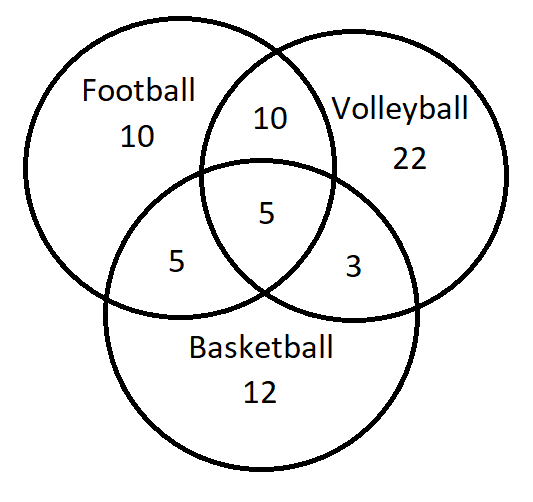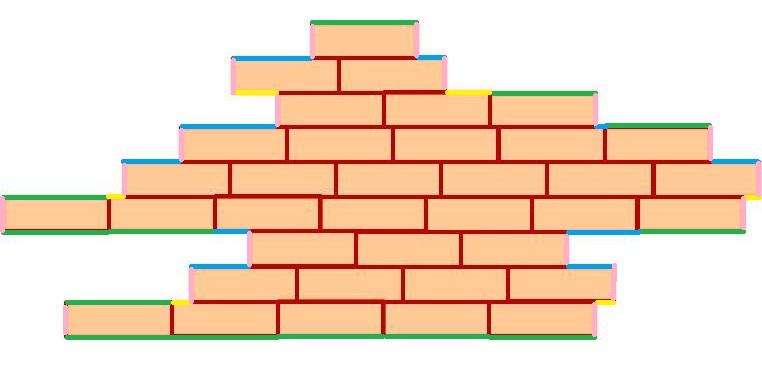-
Posts
3196 -
Joined
-
Last visited
-
Days Won
26
Content Type
Profiles
Forums
Events
Gallery
Blogs
Posts posted by Thalia
-
-
20 hours ago, st3v3n80 said:
3) Heidi prefers mystery caches. She found more caches than Hugo, who found more than Frank. Heidi found more than Hugo. Hugo found more than Frank?
4) Brigitte is German. Her tent is two places left of Frank’s, who isn’t at the end of the row, and somewhere right of – but not adjacent to – the UK cacher. Frank's tent isn't at the end of the row meaning tent 7? 1 and 7? Brigitte's tent, not Frank's, is somewhere to the right of the UK cacher? "Two places left" implies that if Frank was in tent 6, Brigitte would be in tent 4. Assuming your next clue was intended to read one tent to the left or right of the Belgian, this would not make sense as one away apparently does not mean next door? If Frank was in tent 6, would Brigitte be in tent 3?
5) The Chilean, who is not next door but one to the Belgian, is further right than Stanley. Pitch one much prefers earth caches. If the Chilean was in tent 5, where would the Belgian be? Not in tent 4 or 6 as that is next door. So 3 or 7?
7) Heidi is immediately right of the person who has flown over from the States, and who found more caches than the UK cacher. 40 Traditional cache where found by a European cacher, their favourite type. Heidi is to the right of the American. The American found more caches than the UK cacher?
-
Will upload diagram a bit later. Can pretty much fill it out from the description.
Venn diagram
Spoiler
-
5 hours ago, rocdocmac said:
Boo. Dumb phone. Nothing to see here...
I added up the number of students in each of the sports (30,40,25). That's 95. We know there's 23 students who don't play those sports so 67 remaining. That means there's a 28 student overlap. Adding up the given overlaps (15,10,8) gives you 33. So the overlap for those is 5. I subtracted from the appropriate sections of my diagram as I went.
-
 1
1
-
-
-
In order:
5, 10, 22, 12
-
Alright! I think the important thing is that the overhang is on both sides. Not just one side with the next row sticking out from the first.
-
Oyster?
-
Well plainglazed, since you asked for it...
No confidence
A lighthouse? Not seeing the first two lines.
Loving all the baseball references I'm seeing though. I see the struggle to break .500 is over.

-
Spoiler
I've outlined the perimeter. Each of the green lines are L. Pairs of blue lines should be L since the edge of the row it touches is entirely in contact (no overhang). Pink lines are H. Yellow lines are sections I haven't been able to put a value to. So 13 green lines =13L. 5 pairs of blue lines=5L. That's 18L right there and the yellow lines are unaccounted for. With the 18H, you've got 9 bricks plus what looks like about another L.

-
I agree with Ed. Sliding changes the perimeter. You mentioned the bricks stay in contact but your shifted bricks have more contact. If you only had the top two rows of your shifted bricks, the circumference is 2 bricks (4L+4H). But once that top brick starts to slide over the edge of the two below it, the perimeter increases. Let's say exactly half the single brick is in contact with the the row below with the other half hanging over. You now have 5L+4H.
-
Can you give an example of a one word policy? Assuming a male politician from the phrasing "his policies". Any one here more politically inclined?
-
fb- Joe is trying to sell you his share. You are paying him the $200... if you accept his offer.
A question
Who owns the car? If you take his offer and he owns the vehicle, you've got transportation issues. That said, I agree with flamebirde's reasoning so I guess either way, the odds are against you. Not owning the vehicle would just make it worse.
-
Half way?
Schools revoke breathtaking plagiarism?
-
A candle?
-
A sink disposal?
-
What are you trying to do? Is there any other information or directions?
-
Ok. That's fair. I think all the assumptions I've seen are fairly safe ones though. Maybe less safe if it were written today. The divorce one would be a rather cruel trick if applied that way. I don't usually see this kind of puzzle written with a trick like that.
-
I got the outfield and 2B without assuming children have married fathers. The rest seem to depend on that assumption. I've seen a couple sites post this with those assumptions stated with the original problem. I found the sports illustrated version but it sounds like the writer had gotten it elsewhere as he mentioned he hadn't solved it yet. So that is not the original source.
It looks like the only purpose of mentioning the residence is to establish that a given player does not play a given position. Sounds more interesting than just saying "Adams is not the catcher." or "Jones is not the third baseman."
-
Thanks for the clarification. After some googling, I see apartment house is another term for apartment building. . . So if you live in an apartment, you live in a "house". Haven't done the puzzle yet so not sure how relevant that is but it would explain the perceived discrepancy. It was noted that this was published in 1959. I'm sure reality hasn't changed since then in terms of children and bachelors but I'm wondering if there were some different assumptions back then about recognizing children outside of marriage. I get the feeling that unless you're a politician, it might not be quite as big of a deal for a bachelor (or bachelorette) to have a child now as it was in the 50s. I don't have any evidence of that though.
How does recognizing divorce contradict engaged men being bachelors? Google shows a bachelor as being a man who isn't and has never been married. So an engaged man would be a bachelor because he's not actually married, a divorced man would not be a bachelor because he used to be married, but as written, it doesn't matter anyway because Green is still married until the suit is settled.
-
3 hours ago, Shanna said:
I found this way late in the game, but this puzzle makes no sense. If we are to assume that some people are married or single, then are we also to assume that the word "house" means the same thing as the word "apartment"? I found this puzzle a few years ago and forgot about it until I found it today. I assumed that Adams cannot be the third baseman because he lives in a house while the 3B lives in an apartment. I got online to search for the answer because, of course, the puzzle is not solvable. It seems that Sports Illustrated first published it in 1959 and reposted it online. It then apparently went viral. One thing I can say is that any site that has this puzzle posted has people discussing it and everyone agreeing with each other, the same as in this forum, that Adams is the 3B. Not a single person has questioned the difference in residence type. This is the worst puzzle for someone like me because little clues like that are usually given to help answer the puzzle.
"3. The third baseman lives across the corridor from Jones in the same apartment house."
Normally, I would consider an apartment and a house to be different. But clue number 3 seems to indicate that they are interchangeable.
-
Spoiler
Aww. This would have been great 3 weeks ago. I thought it wasn't supposed to repeat itself though.

"See, I have a rhyme assisting
My feeble brain, its task ofttimes resisting."Was that intentional?
-
Spoiler
A few thoughts:
It would be better to start the ball swinging at the beginning to give yourself the most amount of time.
You could also hook the string with the pipe as the balls are swinging so you can catch both balls on the inside of the pipes. At that point, you could attempt to flip the balls up like that toy where the ball on a string is attached to a cup.
He said you can't touch it with your hands. He didn't say anything about feet so I suppose if you're extremely flexible. . .
Just because it's possible doesn't mean it's easy even if you have a good strategy. . .
-
Spoiler
Start the balls swinging before you put the pipes in your mouth or use the pipes to hit one and start the swinging. At that point, hope you've got good timing and coordination. . .
-
15 hours ago, Pickett said:
Haha, that's kind of fun to wrap your head around...
But really, it should be fairly simple, I think:
Each option has a 25% chance of being randomly picked. That is the correct answer: 25%.
BUT there are two options where "25%" is the answer. This means that the answer that you pick has a 50% chance of being "25%", which is STILL the correct answer regardless of the probability of picking an answer that HAS that value. So the probability that you are correct is 50% which is answer 2...
So...
The probability that you choose the correct value of 25% is 50% but since 50% is not 25%, you'd be part of the 50% that guessed wrong?




You're super genius if you solve this Puzzle
in New Logic/Math Puzzles
Posted
This site is filled with intelligent people with different strengths. This one just happens to work well with how my brain is wired. Nice puzzle.